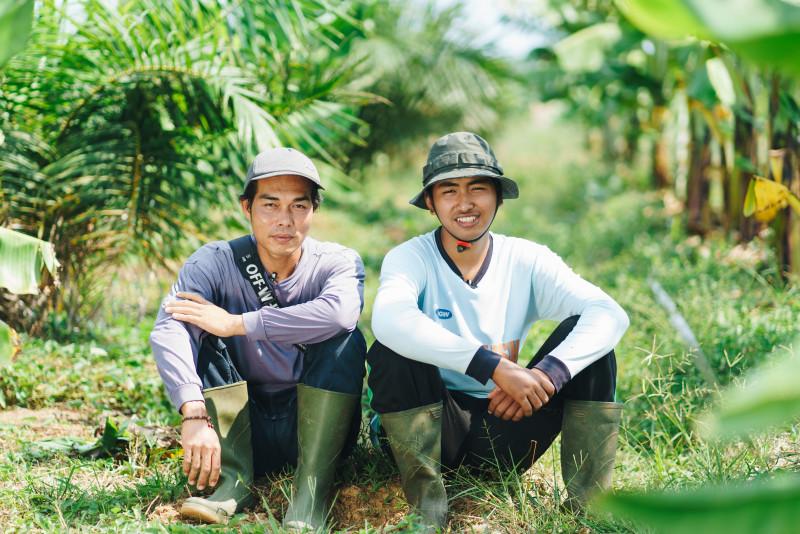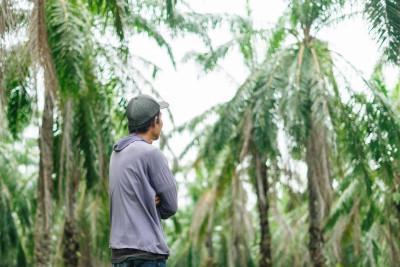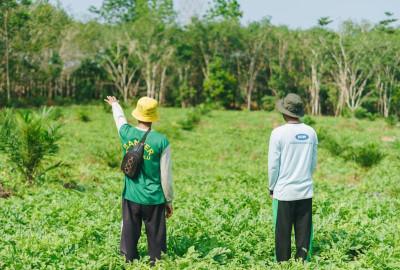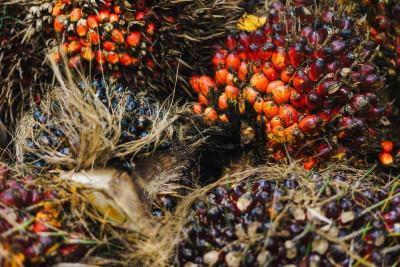
Introduction: The Replanting Dilemma
Oil palm is Indonesia’s and Malaysia’s most important plantation crop. Yet like any perennial crop, oil palm trees age. After about25 years, productivity declines sharply, forcing farmers to replant. For smallholders—who account for around40% of global palm oil production—replanting poses a severe economic challenge.
When old trees are felled and new seedlings planted, smallholders face a3–4 year income gapbefore fresh fruit bunches (FFB) start yielding again. For families dependent on oil palm as their main income, this transition period is devastating. Many hesitate to replant, continuing with unproductive trees, leading to declining national productivity.
One promising solution to this dilemma isintercropping—the practice of planting short-cycle or complementary crops alongside young oil palm.
Understanding Intercropping in Oil Palm Systems
Intercroppingrefers to cultivating more than one crop in the same space during the same season. In the context of oil palm replanting:
Farmers plantcash cropssuch as maize, watermelon, chili, cassava, or vegetables in between the young palms.
Crops are chosen based on market demand, growth cycles, and compatibility with oil palm.
The intercrops provide income while the new oil palms grow, turning idle land into productive farmland.
This approach not only addresses the income gap but also introducessoil health and biodiversity benefitscompared to monoculture systems.
Why Intercropping is a Game-Changer for Smallholders
1. Economic Resilience During the “Gap Years”
Without intercropping, smallholders have no harvestable product for several years. By planting food crops:
Farmers generatecash flowfrom monthly or seasonal harvests.
Income helps cover daily household needs, school fees, and loan repayments.
Farmers are less dependent on predatory lenders during the replanting phase.
2. Improved Food Security
Intercropping often involves food crops like maize, rice, or vegetables. This not only provides additional income but also enhanceslocal food availability, reducing reliance on imports.
3. Soil Health and Environmental Benefits
Diverse cropping reduces pest and disease risks.
Leguminous crops fix nitrogen, improving soil fertility for young palms.
Cover crops reduce erosion and improve water retention.
Intercropping supportsregenerative agriculture, aligning with global sustainability goals.
4. Market Opportunities and Diversification
Farmers tapping into horticultural markets (e.g., watermelon, chili, sweet corn) gain exposure tonew value chains. This diversifies income streams and reduces dependence on a single commodity.
Challenges in Implementing Intercropping
While promising, intercropping is not without barriers:
Knowledge and Training
Farmers require agronomic knowledge to manage multiple crops effectively. Poor crop selection or spacing can hinder young oil palm growth.Market Access
Perishable intercrops require reliable market channels. Without access, farmers risk post-harvest losses.Financing Constraints
Inputs for intercrops—seeds, fertilizer, irrigation—need upfront investment. Smallholders without credit may struggle to start.Institutional Support
Government replanting programs often emphasize oil palm seedlings but provide limited guidance on intercrops. Policy frameworks need to adapt.
Policy and Institutional Pathways
1. Government Support
Replanting schemes under agencies such as Indonesia’sBPDPKS (Palm Oil Fund)should integrate intercropping as a standard recommendation. Subsidies and training can ease adoption.
2. Cooperative and Private Sector Partnerships
Mill companies and NGOs can support farmer groups with inputs, extension services, and guaranteed offtake for intercrops. This builds trust and ensures market access.
3. Financing Innovation
Blended finance models—where banks, impact investors, and governments share risks—can unlock credit for intercropping projects. Linking intercrops to carbon credits or food security programs further boosts viability.
4. Research and Extension Services
Agricultural universities and research centers can refine intercropping models, tailoring them to specific soils, climates, and market conditions. Knowledge transfer is critical.
Intercropping and Global Sustainability Goals
The intercropping solution aligns with global sustainability narratives:
SDG 1 (No Poverty): Provides income security for millions of smallholders.
SDG 2 (Zero Hunger): Increases local food supply and affordability.
SDG 13 (Climate Action): Enhances carbon sequestration and reduces land pressure.
SDG 15 (Life on Land): Promotes biodiversity-friendly agriculture.
For companies sourcing palm oil, supporting intercropping strengthensESG (Environmental, Social, Governance) commitmentsand aligns withEU deforestation-free requirements.
The Future: Scaling Up Intercropping Models
To make intercropping a mainstream solution, several strategies are needed:
National Frameworks: Incorporate intercropping into replanting policies.
Digital Platforms: Use apps to connect smallholders with buyers, agronomic advice, and financing.
Private Sector Commitment: Brands and refiners can co-invest in intercropping projects as part of sustainable sourcing strategies.
Farmer-to-Farmer Learning: Demonstration plots and peer exchanges accelerate adoption by showing real results.
With scale, intercropping could transform oil palm replanting from a period of hardship into an era of innovation and resilience.
Conclusion: From Vulnerability to Opportunity
For smallholders, oil palm replanting is often seen as a financial nightmare—a barren period with no harvests and rising costs. Intercropping changes that story. By planting food and cash crops between young palms, farmers can secure income, strengthen food security, improve soils, and embrace sustainability.
Rather than seeing replanting as a lost opportunity, intercropping reframes it as agateway to diversification and resilience. For policymakers, industry players, and smallholders alike, the lesson is clear: the future of palm oil must be not just about replanting palms, but aboutplanting systems that support farmers, communities, and the planet.



